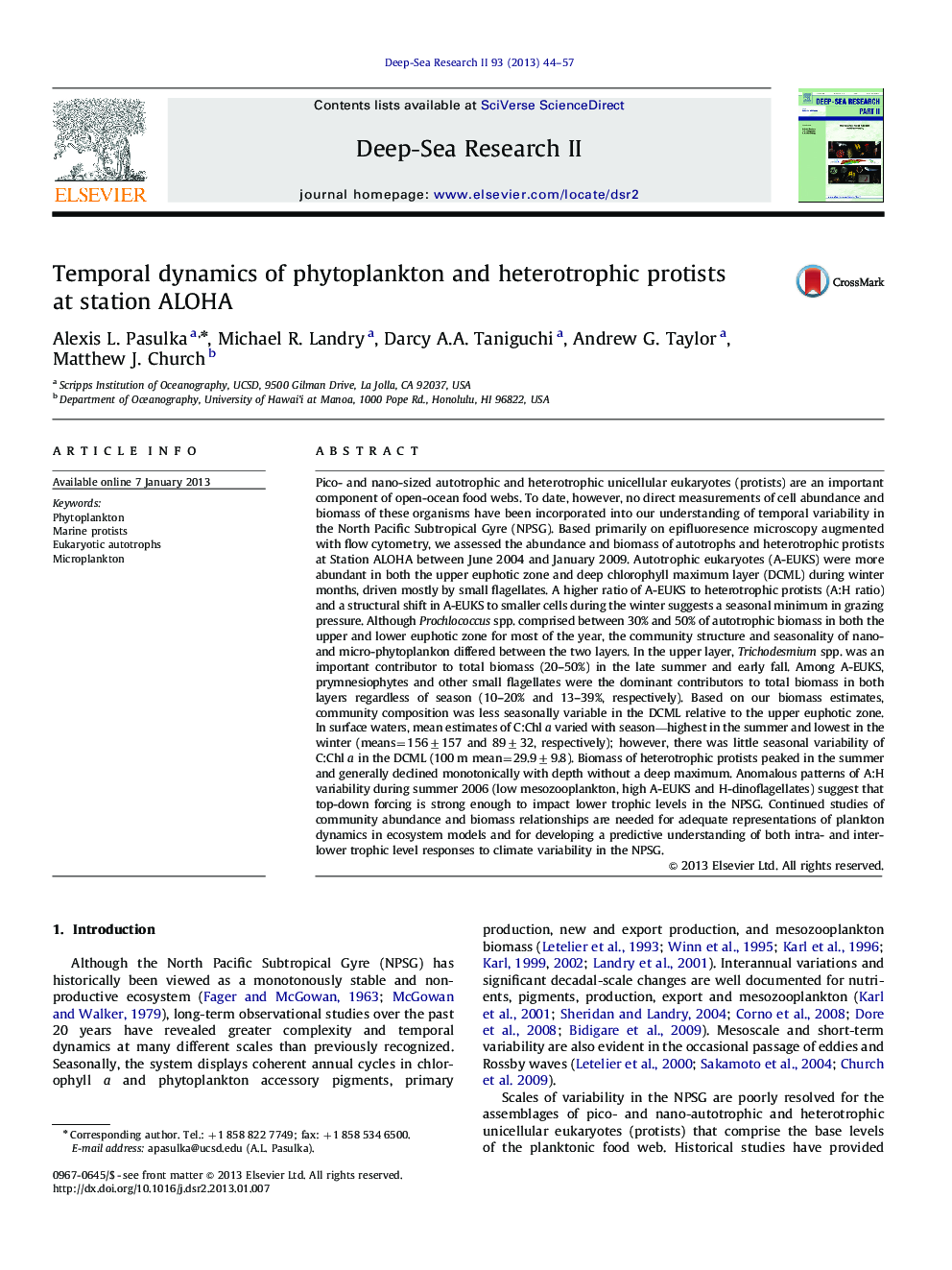| کد مقاله | کد نشریه | سال انتشار | مقاله انگلیسی | نسخه تمام متن |
|---|---|---|---|---|
| 4536528 | 1626446 | 2013 | 14 صفحه PDF | دانلود رایگان |

Pico- and nano-sized autotrophic and heterotrophic unicellular eukaryotes (protists) are an important component of open-ocean food webs. To date, however, no direct measurements of cell abundance and biomass of these organisms have been incorporated into our understanding of temporal variability in the North Pacific Subtropical Gyre (NPSG). Based primarily on epifluoresence microscopy augmented with flow cytometry, we assessed the abundance and biomass of autotrophs and heterotrophic protists at Station ALOHA between June 2004 and January 2009. Autotrophic eukaryotes (A-EUKS) were more abundant in both the upper euphotic zone and deep chlorophyll maximum layer (DCML) during winter months, driven mostly by small flagellates. A higher ratio of A-EUKS to heterotrophic protists (A:H ratio) and a structural shift in A-EUKS to smaller cells during the winter suggests a seasonal minimum in grazing pressure. Although Prochlococcus spp. comprised between 30% and 50% of autotrophic biomass in both the upper and lower euphotic zone for most of the year, the community structure and seasonality of nano- and micro-phytoplankon differed between the two layers. In the upper layer, Trichodesmium spp. was an important contributor to total biomass (20–50%) in the late summer and early fall. Among A-EUKS, prymnesiophytes and other small flagellates were the dominant contributors to total biomass in both layers regardless of season (10–20% and 13–39%, respectively). Based on our biomass estimates, community composition was less seasonally variable in the DCML relative to the upper euphotic zone. In surface waters, mean estimates of C:Chl a varied with season—highest in the summer and lowest in the winter (means=156±157 and 89±32, respectively); however, there was little seasonal variability of C:Chl a in the DCML (100 m mean=29.9±9.8). Biomass of heterotrophic protists peaked in the summer and generally declined monotonically with depth without a deep maximum. Anomalous patterns of A:H variability during summer 2006 (low mesozooplankton, high A-EUKS and H-dinoflagellates) suggest that top-down forcing is strong enough to impact lower trophic levels in the NPSG. Continued studies of community abundance and biomass relationships are needed for adequate representations of plankton dynamics in ecosystem models and for developing a predictive understanding of both intra- and inter-lower trophic level responses to climate variability in the NPSG.
Journal: Deep Sea Research Part II: Topical Studies in Oceanography - Volume 93, September 2013, Pages 44–57